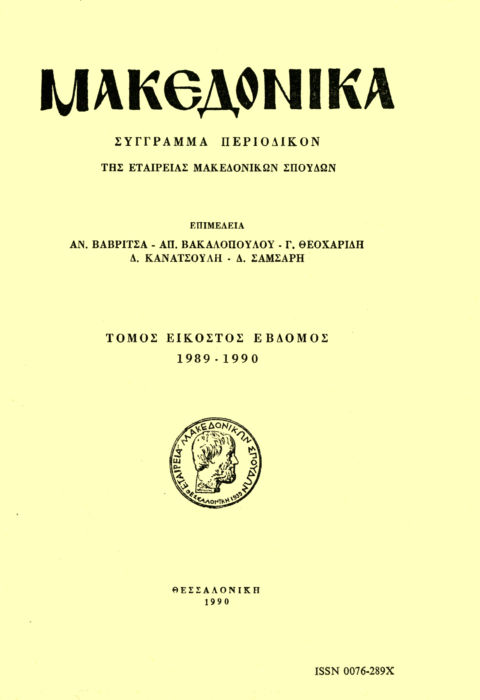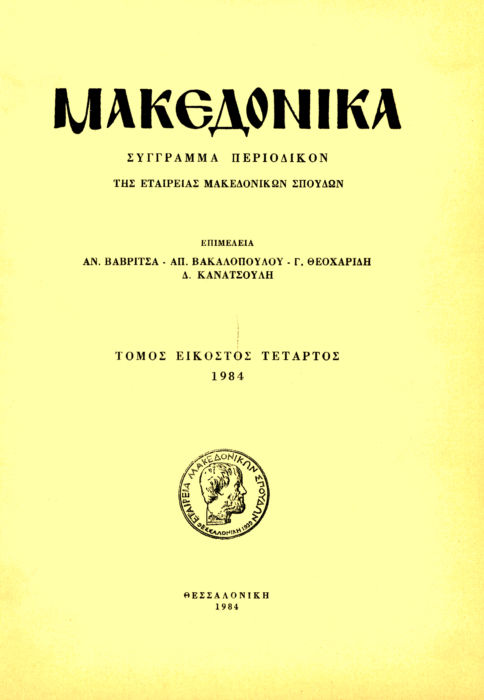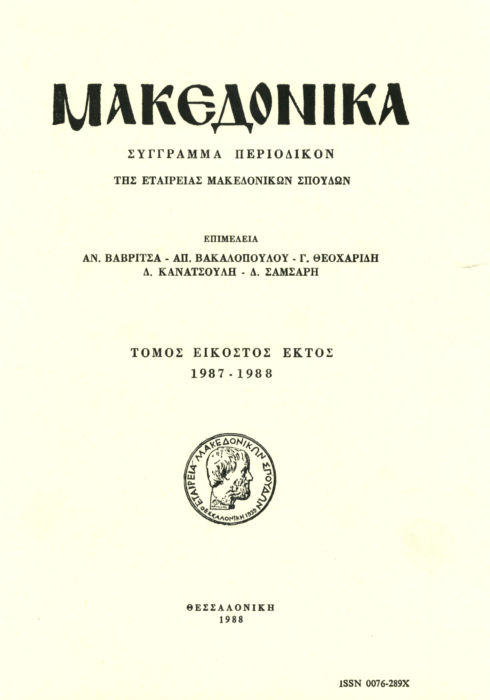Measures and counter-measures after the Greek Turkish Treaty of the Exchange (30 January 1923)
Abstract
With this work we attempt to give a picture of the measures brought in by Greece (measures) and Turkey (counter-measures) and of the sub sequent situation correspondingly, concerning the exchangeable and non exchangeable Moslims and Greeks, immediately after the Treaty of the Exchange.
Specifically:
a) Measures brought in Greece
1) for the exchangeable Moslims and their properties until their departure,
2) for the Moslims of West Thrace, - . 3) for the Moslims of the 9th Declarion, 4) for the Moslims of Albanian ethnics,
5) for the exchangeable Greeks, who came to Greece, before the application of the provisions of the Treaty
b) Corresponding measures in Turkey:
1) for the exchangeable Greeks, until their departure to Greece
2) for the non exchangeable Greeks (ETABLIS) of Constantinople,
3) for the exchangeable Moslims, who arrived in Turkey accordingto the provisions of the Treaty.
Article Details
- How to Cite
-
Πελαγίδης Σ. (1989). Measures and counter-measures after the Greek Turkish Treaty of the Exchange (30 January 1923). Makedonika, 27(1), 121–143. https://doi.org/10.12681/makedonika.95
- Issue
- Vol. 27
- Section
- Articles

This work is licensed under a Creative Commons Attribution-NonCommercial-ShareAlike 4.0 International License.
Authors who publish with this journal agree to the following terms:
- Authors retain copyright and grant the journal right of first publication with the work simultaneously licensed under a Creative Commons Attribution Non-Commercial License that allows others to share the work with an acknowledgement of the work's authorship and initial publication in this journal.
- Authors are able to enter into separate, additional contractual arrangements for the non-exclusive distribution of the journal's published version of the work (e.g. post it to an institutional repository or publish it in a book), with an acknowledgement of its initial publication in this journal.
- Authors are permitted and encouraged to post their work online (preferably in institutional repositories or on their website) prior to and during the submission process, as it can lead to productive exchanges, as well as earlier and greater citation of published work (See The Effect of Open Access).





